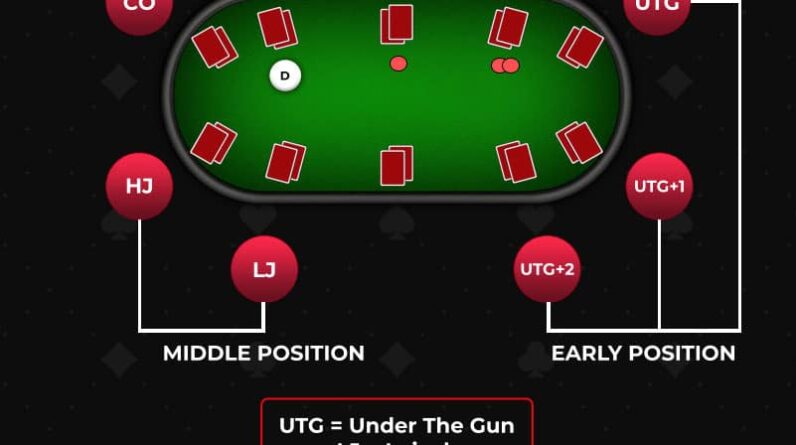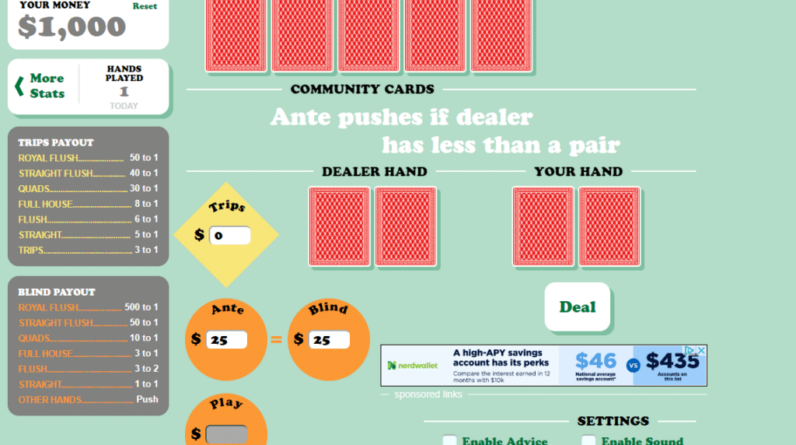Queen-Ten suited is one of those strong and silent types of poker hands.
It’s not a premium Rolls Royce like Pocket Aces. Instead, it’s more of a Volvo: fast, reliable, and safe. Nothing wrong with that in my book!
In this article, you will learn the following:
- How to Play Queen-Ten Suited Preflop
- 3 Tips for Playing Queen-Ten Suited When You Miss the Flop
- 3 Tips for Playing Queen-Ten Suited When You Hit the Flop
Let’s get into it.
New Course Coming This Fall: Smash Live Cash with Nick Petrangelo (ft. Brad Owen)
Upgrade your game with 25+ hours of training content specifically made to help you win more in live cash games. Sit in on private coaching sessions as Nick helps Brad improve his game. Plus, become the player with the best preflop strategy in the poker room with thousands of charts for live-specific preflop situations.
This course has been in development for over a year and it’s almost ready for you to get your hands on it.
Target launch date: September 5th.
Save Your Spot in the Smash Live Cash Course Here >>
How to Play Queen-Ten suited Preflop
Let’s run through every common preflop spot with Queen-Ten suited.
Unopened Pots
Queen-Ten suited is strong enough to open-raise from any position. Limping with this hand would cause you to lose out on some expected value because you can’t doesn’t deny equity by limping, plus it will lead to you winning smaller pots on average.
Against a Raise
Your play when facing a raise should depend on your position and the position of the raiser. Let’s split this section into three groups:
- When you’re in Middle Position or Late Position
- From the Small Blind
- From the Big Blind
Here are the table positions for your reference:
From Middle Position or Late Position
There are two schools of thought for playing versus raises in cash games, both of which can be good:
- 3-bet or fold strategy.
- Mixed strategy including both 3-bets and cold-calls.
Both strategies have extremely similar expected value (EV) as long as you apply the appropriate postflop strategy. So, you can choose whichever one you’re more comfortable with or the one that seems to make more sense in your games.
Related article: Should You Stop Cold-Calling in Cash Games?
If you want to use the 3-bet or fold strategy, you should sometimes 3-bet with Queen-Ten suited, but not always. To be more precise:
- Against an Early Position raise, fold Queen-Ten suited.
- Against a Middle Position raise, fold if you are in the Cutoff.
- Against a Middle Position raise, 3-bet if you are on the Button.
- Against a Cutoff raise, 3-bet from the Button.
If you want to go with a mixed strategy, then you should usually just call with Queen-Ten suited. This hand is not strong enough to 3-bet for value, nor is it weak enough to 3-bet as a semi-bluff. It falls right in the middle, making it the perfect call in most situations. That said, if you are on the Button against a Cutoff raise, specifically, you can mix between 3-betting and calling.
From the Small Blind
You should 3-betwith this hand against almost all positions in a 6-max game. The one exception is when the Lojack is the player who raised, in which case you can fold. In a 9-handed game, get out of the way versus UTG, UTG+1, and UTG+2 as well.
From the Big Blind
When you’re in the Big Blind facing a raise, you should vary your play based on the position of the raiser.
If it was the Cutoff or Button who raised, you can either 3-bet or call (using a mixed frequency strategy is best according to preflop solver outputs). Against all other positions, just call and see a flop.
Against a 3-Bet
In high rake games, which is most poker games, preflop solvers show that Queen-Ten suited should sometimes be called and sometimes be folded when out of position against the 3-bettor.
There is essentially a huge penalty for calling a 3-bet and seeing a flop when most games have a “No flop, no drop” rule in place. This is why such a powerful hand should still hit the muck against a 3-bet some of the time.
When you’re facing a 3-bet and have the advantage of being in position, you should almost always call with Queen-Ten suited. The exception here is when you raised from Early Position or Middle Position and the player who 3-bet is a good player (with a well-built 3-betting range), in which case you should fold.
Against a 4-Bet
Not all 4-bet situations are the same, so let’s break this section down into two scenarios.
1. You 3-bet from Middle or Late Position and face a 4-bet from the open-raiser
You should usually fold in this spot. The exception is if you are on the Button facing a 4-bet from the Cutoff, in which case you can call because ranges are so wide.
2. You 3-bet from the Small Blind or Big Blind and face a 4-bet from the open-raiser
You should only call in this scenario when it is the player on the Button 4-betting. Otherwise, make the fold.
Keep in mind that it is important to consider your opponent’s 4-betting tendencies. Against a tight 4-bettor, for example, you can usually comfortably fold Queen-Ten suited to their 4-bet, regardless of your/their position.
3 Tips for Playing Queen-Ten Suited When You Miss the Flop (As the Preflop Raiser)
Tip #1 – Always bet after you’ve 3-bet from the blinds, unless the board is low and connected
The 3-betting range is so strong (see: range advantage) against the calling range of the opponent that you should always fire a small c-bet. The only times you should be careful and check (with the intention to check-fold) is when the board is low and connected — think 8-6-5. Those boards favor the caller. More info on this is in the following tip.
Tip #2 – Check on super connected boards when you don’t have a real draw
I’m talking about boards such as 8♥ 6♥ 5♣ or 7♠ 6♠ 5♣.
On boards like these, Queen-Ten may have a backdoor straight draw, but that’s not enough to justify putting any chips in the pot. The board is so connected and so much better for the caller’s range than yours. This is because they have a higher concentration of low-medium pocket pairs and suited connectors, so your overall strategy should be very passive in these situations.
Tip #3 – Always bet when you have a backdoor flush draw
When you have some type of backdoor equity like a backdoor straight or flush draw, then it’s best to bet. There are many turn cards that will enable you to continue semi-bluffing.
3 Tips for Playing Queen-Ten Suited When You Hit the Flop
Tip #1 – If you have a two-pair but the straight or flush completed on the turn, you can check
When you have a strong hand in poker, you should almost always lean towards building the pot ASAP. When you flop two pair, trips, a straight or a flush, you should basically always fast-play your hand.
That being said, when a whole new class of strong hands materializes on the turn, such as a straight or a flush, then checking at least sometimes with the lower classes of strong hands (like two pair) is part of a good strategy.
For example, suppose you c-bet in position on Q♠ T♦ 6♠ and the turn is the 9♠. You can consider checking back on this turn.
Your opponent is going to show his hand strength on the river with his bet size very often, and you will be able to raise for value efficiently (versus small bets) or simply call (against big bets). By playing it this way, you will end up losing less than you would have if you bet on the turn and called a raise. Plus, you’ll still have a chance to get some nice value versus worse hands.
Tip #2 – When you flop top pair in a single raised pot, lean towards betting on the flop and checking on the turn
On most boards, the top pair that you’ll hit with QTs will not be strong enough to value bet across three streets.
Queen-Ten’s top pairs are usually worth betting two streets for value because your kicker will only be good (not great). When this is the case, it’s usually better to extract value by betting flop, checking turn, and betting river (rather than bet-bet-checking).
This way you give your opponent the chance to bluff on the river. Otherwise, you will find yourself in a clear value-bet spot on the river should your opponent check again.
Tip #3 – If you have a second pair and a flush draw, play passively
Second pairs are usually medium-strength hands that are best played passively, and they should still be played passively when you have a flush draw.
If you’ve been reading Upswing Poker articles for some time, you might remember that when you have a medium-strength top pair with a flush draw on the turn, you should bet with it, even if you’d check that same top pair if it didn’t have a flush draw.
But when you have a flush draw to go with your middle pair, it’s still not strong enough to go for value. Instead, you can view it as a middle pair with an insurance policy.
Final Thoughts
There you have it, the 5-minute crash course for playing Queen-Ten suited better than the next guy!
If you enjoyed this article or you’d like to know how to play some other hands, please let me know which hand you want to see covered in the comment section down below.
Want to keep learning about the best way to play certain starting hands in No Limit Hold’em? Check out How to Play Pocket Sevens in Cash Games.
Till’ next time, good luck, grinders!
New Course Coming This Fall: Smash Live Cash with Nick Petrangelo (ft. Brad Owen)
Upgrade your game with 25+ hours of training content specifically made to help you win more in live cash games. Sit in on private coaching sessions as Nick helps Brad improve his game. Plus, become the player with the best preflop strategy in the poker room with thousands of charts for live-specific preflop situations.
This course has been in development for over a year and it’s almost ready for you to get your hands on it.
Target launch date: September 5th.
Save Your Spot in the Smash Live Cash Course Here >>







